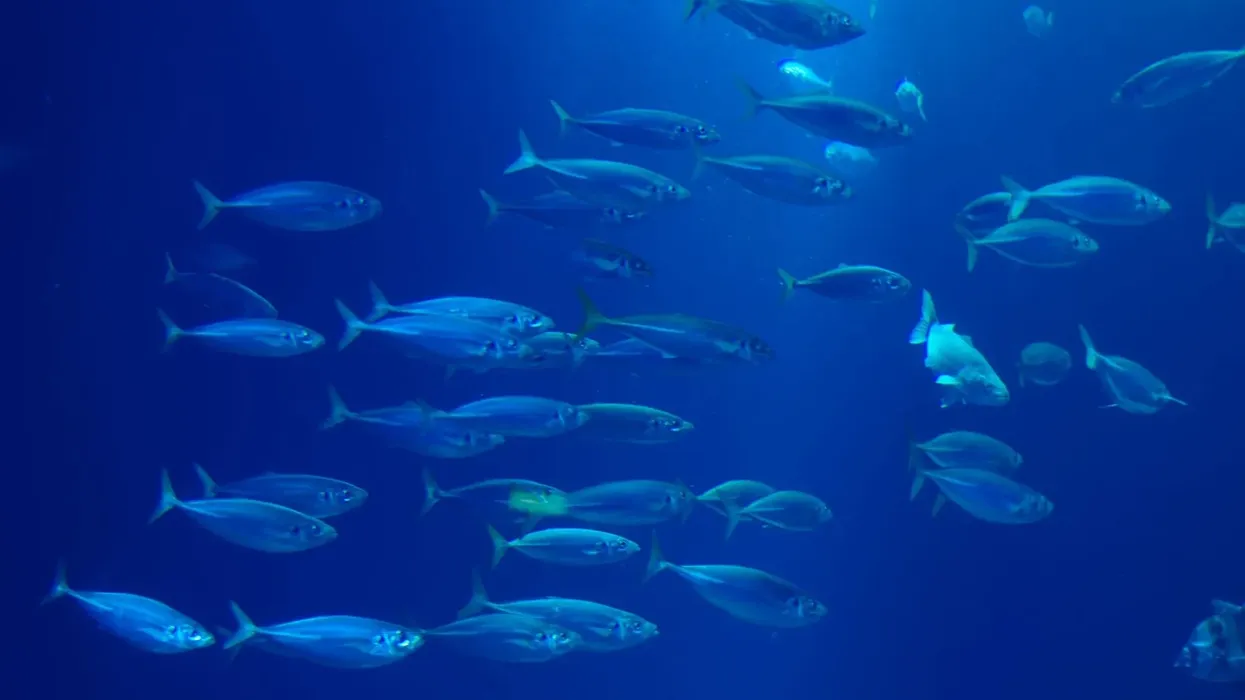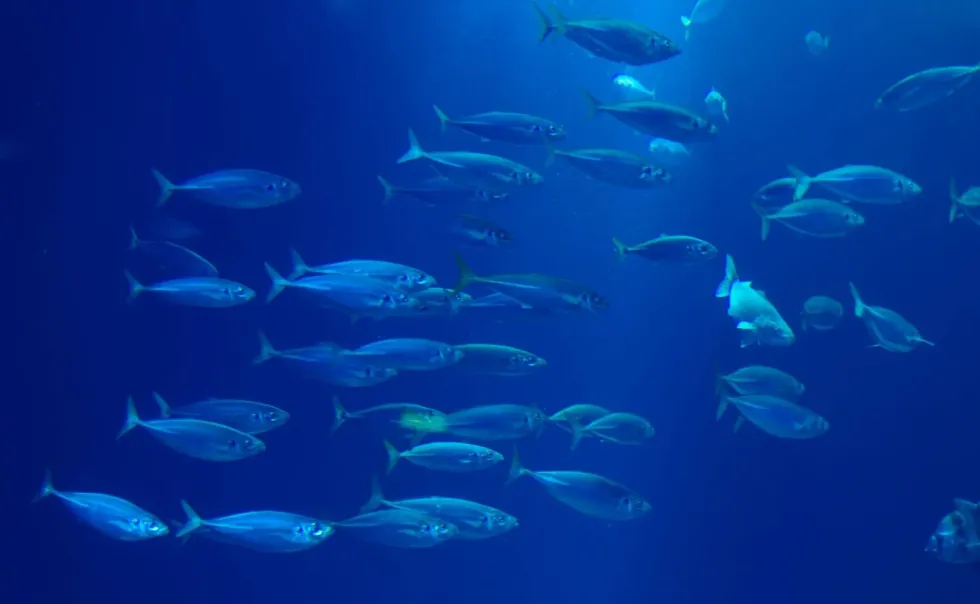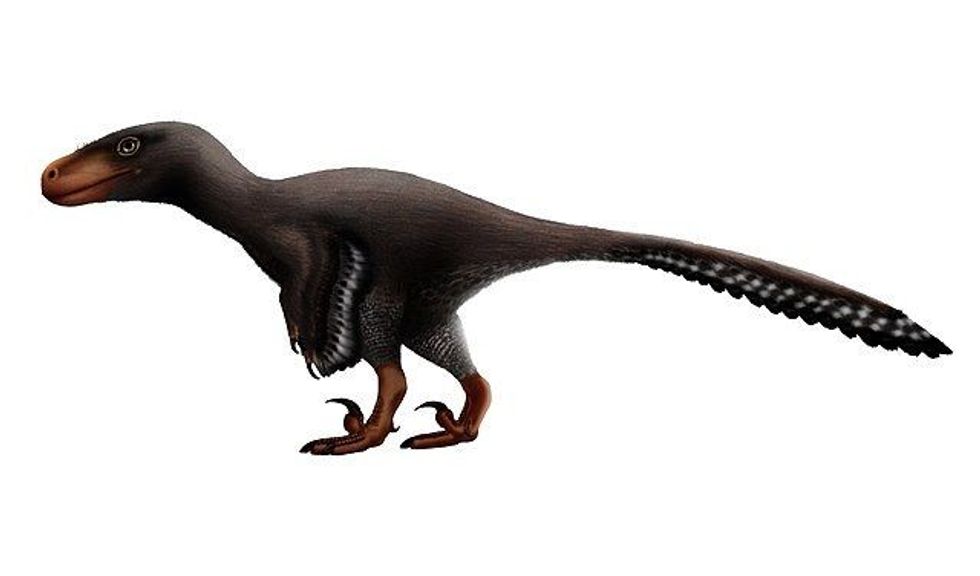European sprats are popular gamefish which live with schools of conspecifics in the open sea and estuaries of Europe. They live in the Atlantic Ocean, Baltic Sea, Black Sea, and the Mediterranean Sea, in particular.
It is a migratory fish that migrates between winter feeding waters and coastal spring breeding zones. The eggs and larvae of sprats are pelagic, and the fish is used for human consumption and as fish meal.
It can be fried, smoked, canned, deep-fried. The fish's body is elongated and silver in color with a protruding lower jaw and forked tail.
For more relatable content, check out these channel catfish facts and severum facts for kids.
European Sprat Interesting Facts
What type of animal is a European sprat?
The European sprat (Sprattus sprattus) is a marine fish species also known as Russian sardines.
What class of animal does a European sprat belong to?
The European sprat belongs to Actinopterygii, the class of bony fish.
How many European sprats are there in the world?
The exact population of European sprat throughout its range is unknown.
Where does a European sprat live?
The European sprat population distribution range occurs in the marine waters near Europe and northern Africa; Atlantic Ocean, North Sea, Baltic Sea, Black Sea, and the Mediterranean Seas. This sprat fish species migrates between its winter feeding grounds and summer/spring breeding grounds.
What is a European sprat's habitat?
The European sprat habitat description includes open ocean waters and estuaries. It is tolerant of low salinity and can therefore live in estuaries even though it is considered a marine fish. It usually lives in the middle level of the sea or lower and rises to the surface to feed at night.
Who do European sprats live with?
European sprats are a schooling fish species that live in shoals of fish. The school doesn't have a fixed number but is usually quite large. They also live with similar-sized fish from other species like a herring.
How long does a European sprat live?
The European sprat can live for an average of five to seven years.
How do they reproduce?
The European sprat breeds throughout the year but peaks between December and April in the Mediterranean Sea and April and August in the Baltic Sea and the northeastern Atlantic Ocean. Spawning takes place in coastal waters. The young fish species mature sexually in the second year and lays 10,000 - 40,000 fish eggs yearly.
The European sprat egg, larvae, and juveniles are pelagic. The eggs and larval young are called pelagic when they are buoyant and quickly dispersed by the currents.
They spawn mainly in the southern North Sea. It takes 15 days for the eggs to hatch after fertilization. The reproductive success rate and development of young larvae are primarily influenced by environmental factors.
What is their conservation status?
The conservation status of European sprats has not been listed yet because sufficient data is not available. They are currently categorized as Data Deficient in the IUCN Red List.
European Sprat Fun Facts
What do European sprats look like?
The European sprat physical description has bluish or greenish-grey coloring along its back, and its flanks are silver in color. This sprat fish species don't have any dark spotting in adults or juveniles.
Its body is elongated and laterally compressed, with a row of sharp scales along its belly. The lower jaw projects outward.
The gill covers are smooth and rounded, without any bumps or ridges. The dorsal fin only has 13-21 soft rays, the anal fin has 12-23 soft rays, and the pelvic fins have seven to eight soft rays.
* Please note that this is an image of a Herring (Clupea pallasii), a species from the same family as the European Sprat. If you have an image of a European Sprat please let us know at hello@kidadl.com.
How cute are they?
This sprat is very cute, and its small size and shiny color increase its charm.
How do they communicate?
The European sprat use touch, smell, or chemicals to communicate. Since they live in schools, they are near each other and can communicate easily using these means.
How big is a European sprat?
These sprat fishes can grow up to 6.3 in (16 cm) and are an average of 3-5 in (7.6-12.7 cm) in length. It's the same size as a pumpkinseed sunfish and is ten times smaller than codfish, another fish popular for human consumption of its flesh.
How fast can a European sprat swim?
The exact speed of a European sprat is not known, but they are very active forage fish with a high metabolism. They are active during the night and day.
How much does a European sprat weigh?
This sprat marine fish species is very lightweight and weighs 0.3 oz (8.5 g). They aren't sold single and are instead of their distribution and production by fisheries is by the pound. The sprat is twice the weight of a rainbow shiner.
What are the male and female names of the species?
The two sexes of this species do not have specific names. They are generally called European sprat male or European sprat female.
What would you call a baby European sprat?
The baby European sprat do not have any particular name and can generally be called juveniles, young, or larvae.
What do they eat?
The European sprat diet consists of various species of zooplankton and copepods. The species of zooplankton consumed depends on factors of the environment like temperature and season.
Due to a decrease in zooplankton, the population is slowly facing a food crisis. Unlike some related herring species, sprats do not change their forage diet after growing in size. In the wildlife food chain, the cod is its predator, while sprats and herring are prey.
Are they dangerous?
No, they are not dangerous. The Sprattus sprattus is harmless to humans and other fish as it isn't a predator.
Would they make a good pet?
They are not kept as pets in home aquariums are they are shoaling fish and migratory. Their natural and habitat needs can not be met in a home aquarium. Some commercial aquariums may keep them as a part of their collection. These fish are more popular for commercial production by fisheries and use of their flesh.
Did you know...
The European sprat (Sprattus sprattus) has considerable variation in common names depending on the range wherein it was caught or spawning. It is bristling, brisling, garvie, garvock, Russian sardine, russlet, skipper or whitebait.
Initially, the genus was called Clupea, but it was later changed to Sprattus. It belongs to Clupeidae, the herring family. This species has three recognized subspecies; S. sprattus balticus, S. sprattus phalericus, and S. sprattus sprattus.
This fish is used to make fish meal and feed and is used for human consumption (domestic and commercial). We eat it in many forms around the world, fresh, canned, salted, fried, boiled, deep-fried, marinated, smoked. Canned sprats are especially popular in northern Europe. It is used to feed minks, and juveniles are used as fish meal and bait.
The European sprat nutrition facts mention that this fish has around 10.5% fat in its flesh and contains various vitamins and minerals, making it a very healthy food meal ingredient.
European sprat (Espadilla del Caspio) are sometimes passed off as other fish like anchovies and sardines. Products that should actually be made with anchovies or sardines are actually prepared as sprats. If European sprat vs. sardine are compared, their flavor size makes it easy to mistake sprats for baby sardines.
Are European sprats endangered?
No, European sprats are not endangered yet. Although the official conservation status of these fish has not been assessed due to a lack of data, experts believe that their population is stable and not under any severe threats. Eventually, excessive, unrestrained fishing by fisheries and distribution could lead to depletion in population.
Why is it called sprat?
The word 'sprat' is used to refer to a small insignificant person. This fish is called by this name due to its small size.
Here at Kidadl, we have carefully created lots of interesting family-friendly animal facts for everyone to discover! For more relatable content, check out these midas blenny facts and pilchard facts pages.
You can even occupy yourself at home by coloring in one of our free printable European sprat coloring pages.
The second image is owned by Togabi.










